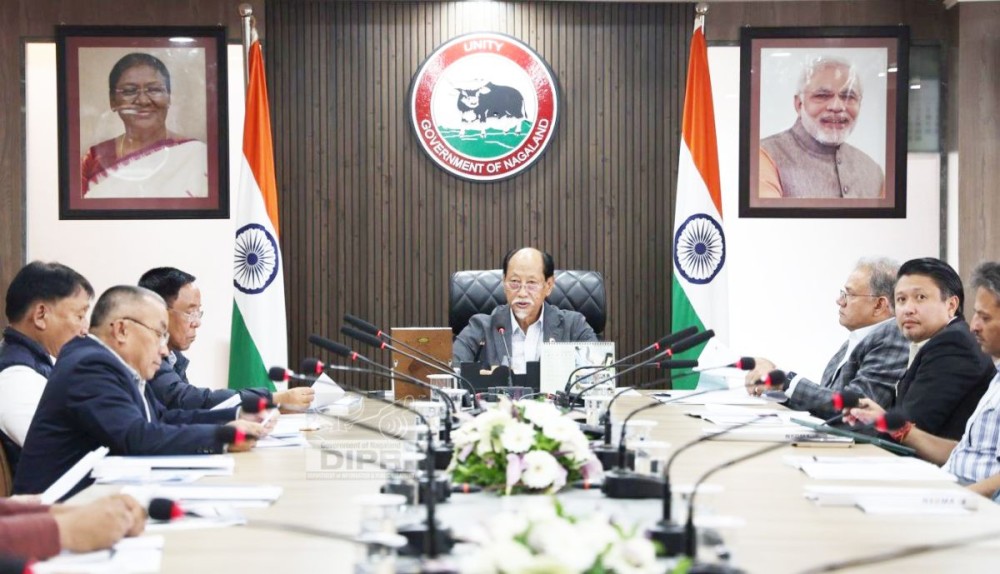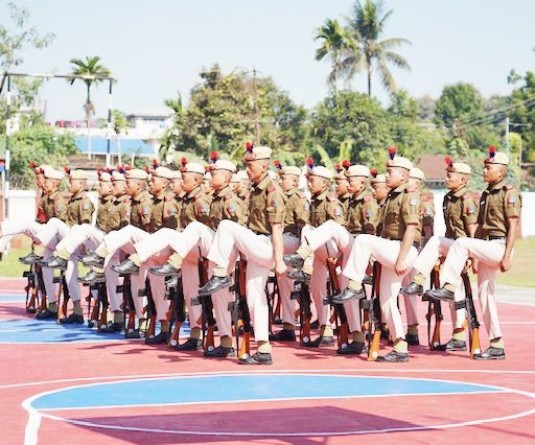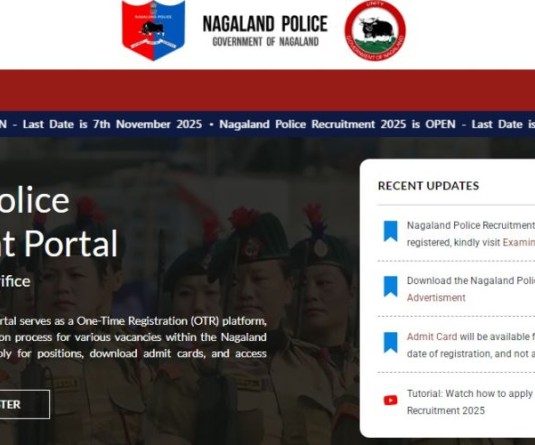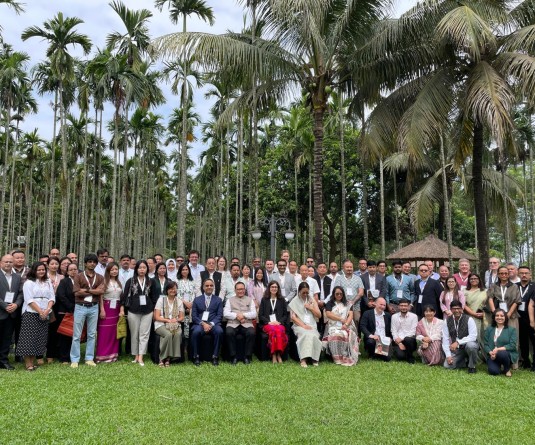Nagaland Chief Minister and NSDMA head Dr Neiphiu Rio presides over monsoon preparedness meeting held at Civil Secretariat, Kohima on May 20. (DIPR Photo)

Kohima, May 20 (MExN): Essential services, roads, and emergency response were some of the key focus areas during a monsoon preparedness meeting presided over by the Nagaland Chief Minister, Dr. Neiphiu Rio, at the Chief Minister’s Conference Hall, Nagaland Civil Secretariat, Kohima on May 20.
Commenting on the preparedness of essential commodities, Dr. Rio, who also heads the Nagaland State Disaster Management Authority (NSDMA), directed the concerned department to assess the availability of essential commodities across all districts before the onset of the monsoon season.
He further noted that any complaints from villages or towns regarding the shortage of essential commodities must be reported without delay.
The Chief Minister also instructed the department to monitor fair price shops and ensure that consumers’ rights are protected.
Additionally, he directed the Chief Secretary to convene a meeting with all the Deputy Commissioners to review the status of essential commodities and district-wise preparedness.
On the issue of roads, Dr. Rio directed the Public Works Department (PWD) to assess the permissible load capacity for trucks on national highways and to implement proper specifications and monitoring during the monsoon season.
He also advised the Administration and Police Department to deploy teams of officers and Dobashis for routine road checks to ensure the smooth flow of traffic in towns and on highways.
Dr. Rio further advocated for the restoration of the State Quality Control Board in Nagaland at the earliest.
Meanwhile, sharing his views on the road sector, Minister for Roads and Bridges, G. Kaito Aye, stated that people demand good roads, and emphasised that the National Highways and Infrastructure Development Corporation Limited (NHIDCL) must take “serious responsibility and provide resilient roads for the people of Nagaland.”
He also called on the NHIDCL and the concerned department to identify specific areas in need of immediate restoration and repair, adopt appropriate restoration strategies, and ensure their effectiveness.
The Minister further urged the Mechanical Department to update the status of available machinery for the upcoming monsoon season.
He also requested the Disaster Management Department to earmark a specific emergency response fund that can be utilised by any department for the welfare of the people during the monsoon.
Likewise, Minister for the Public Health Engineering Department (PHED), Jacob Zhimomi, highlighted the “watery” soil condition in Nagaland and stressed the need for strict adherence to construction protocols, especially thorough soil testing during road projects.
He also urged the NHIDCL to ensure that contractors follow strict construction protocols to ensure durability and sustainability.
Zhimomi further advised that contractors must not leave any residue on the roads after completing construction work.
NSDMA forecasts uneven and erratic monsoon
Presenting the ‘Monsoon 2025 Forecasting for Nagaland,’ Joint Chief Executive Officer of NSDMA, Johnny Ruangmei, noted that rainfall distribution across the State would be uneven and erratic during the upcoming monsoon season.
This, he cautioned, could impact the crop plantation season.
To mitigate the risks, he called for a proactive Disaster Risk Reduction approach. Combining preparedness, data-driven planning, and community engagement can significantly reduce potential risks, he said.
With unprecedented changes in weather and climate patterns, he underscored the need for development activities to focus on future-resilient infrastructure and a resilient economy as primary goals for sustainable development.
During the meeting, the PWD (R&B) and NHIDCL presented on ‘Monsoon Preparedness and Resilience of Road Infrastructure Sector’, while the HG, CD&SDRF/NDRF presented on ‘Preparedness of Emergency Response Agencies.’
As per the State DIPR, presentations were also made by the Health and Family Welfare Department on the ‘Preparedness of Health Personnel and Infrastructure’, and by the Food and Civil Supplies Department on ‘Essential Commodities and Preparedness.’
The official monsoon season in India begins in June and lasts till September. Also known as the southwest monsoon, it accounts for the majority of India’s annual rainfall.






